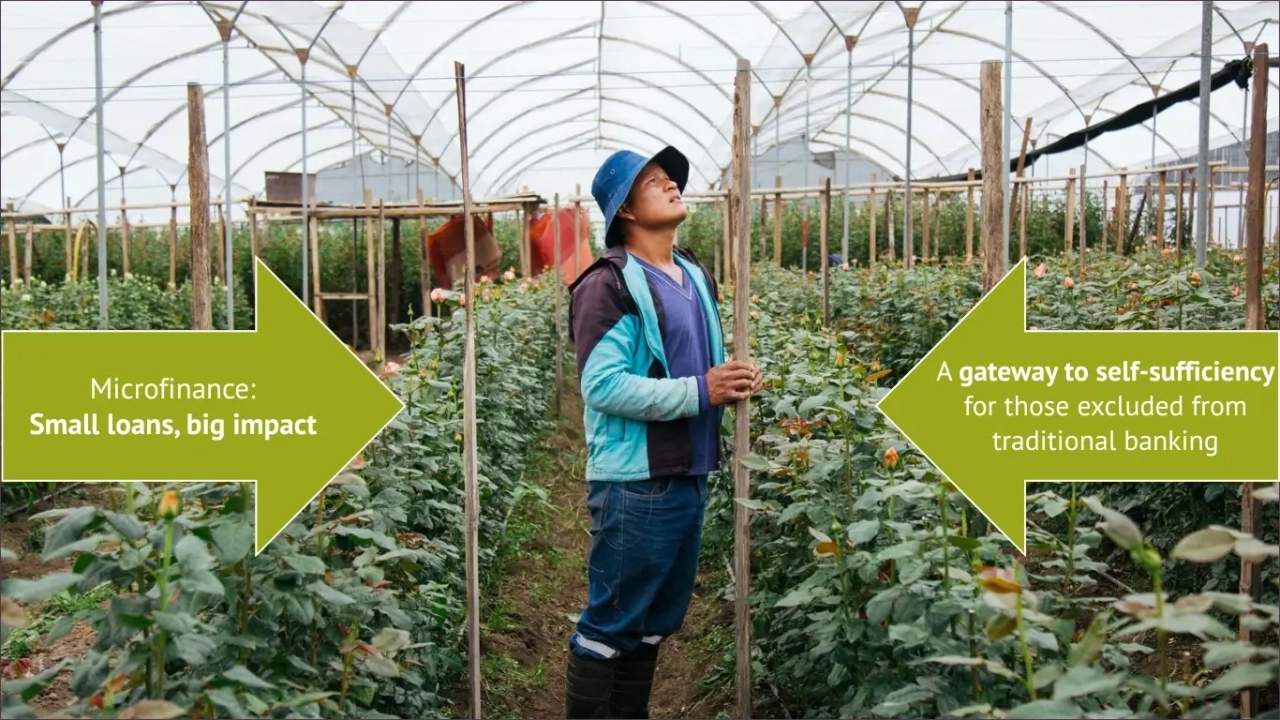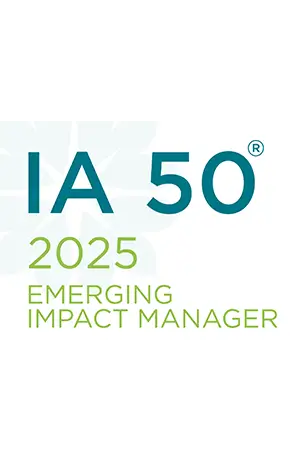
Microfinance is about more than just lending - it plays a crucial role in financial inclusion, creating significant impacts in underserved communities. In the world of finance, microfinance stands out as a powerful tool for economic empowerment. However, one aspect often raises questions among investors and observers alike: the interest rates.
At first glance, these rates may appear high compared to conventional loans, but they reflect the complex realities and unique challenges - such as high inflation and the elevated costs of delivering financial services in difficult environments. They are essential for enabling financial self-sufficiency among individuals who lack access to traditional banking.
Despite these concerns, interest payments are generally not viewed as an unmanageable burden for borrowers. In fact, according to the 2023 Microfinance Index by 60 Decibels, 74% of clients reported that repayment was not a problem, while only a small minority described it as a heavy burden. About one in four said repayment was “somewhat hard,” a level of difficulty that often encourages financial discipline and supports business growth. That said, it's important to recognize that commonly cited repayment figures - such as a 95% collection rate - can be misleading. As one CGAP blog post points out, for institutions offering short-term, high-frequency loans, a 95% collection rate may result in portfolio losses of nearly 40% annually. To remain sustainable, many MFIs require collection rates above 98.5%. This highlights both the strong repayment performance of borrowers and the razor-thin margins MFIs operate within to remain viable and to continue serving their communities.
The True Cost of Microfinance: Breaking Down the Interest Rate
To truly understand microfinance interest rates, we need to look beyond the surface and examine what goes into a typical microfinance loan interest rate. Understanding these components can provide clarity on why these rates are structured the way they are.
-
Operating Costs: The Backbone of Service Delivery
A significant portion of the interest rate goes towards covering the day-to-day operations of microfinance institutions (MFIs). These costs tend to be higher in microfinance due to the labor-intensive nature of serving clients in often hard-to-reach areas. The process involves:
- Administrative Expenses: Covering the daily operations of the finance institution, including staff salaries, branch operations, technology infrastructure, and general administration.
- Rural and Remote Outreach: Serving clients in remote or rural areas requires a labor-intensive approach, which naturally raises costs.
- Loan Management: Involves the full loan process, compliance checks, reporting, and providing additional services like financial education and personalized support.
The nature of microfinance demands a more hands-on approach, making these operational costs essential for maintaining the quality of service and for providing the personalized support that many clients need.
-
Size Matters: High Fixed Costs Per Loan
Much of the aforementioned operating costs are fixed or step-fixed in nature, and when applied to a small loan size, represent a more significant percentage of cost for a loan. This can be more easily understood with a simple example:
- Loan A: $100 loan → $20 in admin costs = 20% of loan
- Loan B: $10,000 loan → $20 in admin costs = 0.2% of loan
Because microfinance targets lower economic strata, loan sizes are inherently smaller and thus there is very little room for maneuver.
-
Financial Expenses: The Cost of Capital
Another substantial portion of the interest rate covers the cost of capital for the FI/MFI. This includes:
- Borrowing Costs: Expenses related to securing funds and hedging against financial risks.
- Investor Cost of Capital: Returns expected by equity investors in the microfinance sector.
-
Loan Loss Reserves & Capital: Preparing for Expected & Unexpected Credit Losses
FIs/MFIs must set aside a portion of their income to cover expected (estimated) and unexpected losses. Expected credit losses are typically covered via the creation of loan loss reserves and pass through the income statement as an expense. Unexpected losses are typically covered through the retention of income after all expenses. Both sources of “capital” are vital for maintaining financial stability and ensuring that the institution can continue to serve its clients even when some loans are not repaid.
-
Sustainable Returns: Ensuring Continued Service
A small portion of the interest rate represents the net income or return on assets for the finance institution. This margin is necessary for:
- Attracting investors to provide more capital
- Funding growth to reach more underserved communities
- Investing in new technologies and services to better serve clients
- Ensuring the long-term sustainability of the institution
Sustainable returns are not about maximizing profit but about ensuring the institution can continue to fulfill its mission over the long term.
-
Inflation Adjustment (Variable, can be significant!)
In many countries where FIs/MFIs operate, inflation can be a significant factor. FIs/MFIs must adjust their interest rates to account for inflation, ensuring that the real value of the loan - and loan portfolio - is preserved over time. For example, in environments where inflation is high, eg, at 15 - 100%+, the interest rate needs to be set above this level to maintain both the real value of the loan and the purchasing power of the funds.
This is also reflected in the fact that the interest rate level on government risk-free bonds is significantly higher than in developed markets. For instance, in Georgia where inflation recently rose to over 4% in July 2025, the central bank’s policy rate remains at 8%, a clear illustration that nominal interest rates must stay above inflation to preserve real value.
-
Risk Premium for Political Instability (Variable)
In regions affected by political instability or conflict, the risks associated with lending increase. To compensate for these heightened risks, FIs/MFIs may include a risk premium in their interest rates. This premium helps ensure that the institution can continue to operate in uncertain conditions and in the face of potential disruptions.
-
Climate Risk Adjustment (Emerging factor, variable)
With the growing impact of climate change, many FIs/MFIs are beginning to factor in climate-related risks, particularly for agricultural loans. These adjustments are becoming more common as institutions seek to protect themselves and their clients from the unpredictable effects of climate events that can affect borrowers' ability to repay.
One promising innovation is the combination of parametric insurance coverage with agricultural financing for smallholder farmers. Parametric insurance pays out automatically when predefined triggers occur (e.g., specific rainfall or drought thresholds), often allowing MFIs to reduce collateral requirements and offer lower interest rates to insured borrowers compared to uninsured counterparts. Research in Zimbabwe and other regions shows that this type of insurance can enhance resilience and affordability, making financing more accessible for vulnerable farmers.
By mitigating weather-related repayment risk, parametric insurance helps MFIs manage climate exposure and pass the benefit back to borrowers. This is a meaningful step toward balancing the sector's mission of financial inclusion with sustainable lending practices.
Appropriate Benchmarking?
It is not always clear what benchmarks investors use when assessing the appropriateness of interest-rate levels. Given the size of microfinance loans, their cost, and potential risks (credit, inflation, climate), pricing for microfinance, and potentially some SME loans, are probably more aligned with consumption-lending products in developed markets.
In the U.S.A, according to the Federal Reserve’s May 2025 G.19, the average annual percentage rate (APR) is USD 21.16% across all credit card accounts and USD 22.25% for accounts assessed interest. Industry surveys show similar or higher averages: Forbes Advisor reports USD 25.33%, Bankrate finds comparable figures among the 50 largest issuers, and Investopedia lists USD 23.99% as the June 2025 median.
The United Kingdom shows similar or higher patterns. NimbleFins, using Bank of England data, reports that in January 2025 the average credit card APR was GBP 24.65%, with significant variation: low-rate cards GBP ~10.9%, rewards cards GBP ~28.7%, and credit-builder cards reaching ~34.61%.
While much of this increased rate for consumption lending is tied to credit risk, there is also the dimension of the size of the transaction that increases the price. Similarly, in Switzerland, UBS charges CHF 13% annual interest on partial-payment credit card balances, calculated from the transaction date.
Similarly where microfinance is commonly represented, APRs also vary widely depending on geography, inflation, and loan size. These rates reflect the real cost of delivering inclusive finance in challenging environments, driven by operating, financial, and risk-related expenses, not excessive profit margins.
Thus, when assessing the appropriateness of interest rates, it is critical to understand the risk and structure of the loans so that suitable benchmarks can be used.
Addressing Challenges in Microfinance and Efforts to Lower Interest Rates
Despite these necessary costs, the microfinance industry is continuously working to reduce interest rates while maintaining sustainability. Here’s how the industry is addressing some of the challenges:
- Addressing High-Costs & Small Loan Sizes: FIs/MFIs are embracing digital technology and streamlining processes to reduce the efforts and higher costs associated with managing many small loans. Additionally, digital technologies reduce logistical challenges of working in remote areas and facilitate the entrance into new underserved markets.
- Balancing Sustainability and Impact: Finance institutions are constantly working to improve operational efficiency and develop diverse product offerings to ensure they can continue serving their communities effectively.
- Mitigating Higher Risk Profiles: Improved risk assessment methods and partnerships with local organizations help reduce the risks associated with lending to clients without traditional collateral or credit histories.
- Accessing Affordable Capital: The industry is actively seeking socially-minded investors and developing innovative financing models to create access to capital for the sector. Additionally, as operational and technical performance improves, investing in the asset class becomes more mainstream, facilitating increased investment into the industry.
- Adapting to Climate Impact: FIs/MFIs are developing new products and services that help borrowers build resilience to climate shocks, such as parametric crop insurance or loans for climate-adaptive technologies.
- Diversifying Portfolios: Most FIs/MFIs are diversifying their portfolios geographically to mitigate regional-specific risks within a country.
Regulatory Oversight: Protecting Borrowers and Promoting Responsible Lending
The microfinance sector operates within a complex regulatory framework, combining local government regulation with international standards and oversight from international investors and development finance institutions (DFIs). At the national level, central banks and financial regulators oversee licensing, capital adequacy, interest rate caps, and consumer protection measures. For example, the Reserve Bank of India requires NBFC-MFIs ("Last Mile Financiers" are known as NBFC MFI or Non-Banking Financial Company-Microfinance Institutions) to follow specific pricing frameworks and borrower exposure limits to curb over-indebtedness, while Kenya’s Microfinance Act imposes minimum capital and reporting requirements.
Internationally, organizations like the Basel Committee on Banking Supervision and IFRS standards influence how microfinance institutions manage risk and report loan performance. Both DFIs, such as IFC (International Finance Corporation, is a member of the World Bank Group) and FMO (Dutch development bank structured as a bilateral private-sector international financial institution based in the Hague, the Netherlands), and international investors like Enabling Qapital, conduct detailed due diligence and are able to provide feedback where institutions do not follow industry best practices, integrating principles such as capital adequacy contractually into loan agreements and technical assistance packages.
As the sector digitizes, regulators are also adapting. New frameworks for digital microfinance - addressing algorithmic lending, mobile money integration, and data privacy - are being developed to safeguard clients using mobile-based services.
Finally, supervision mechanisms such as periodic audits, loan portfolio reviews, and centralized consumer complaint systems and regular monitoring visits by investors are vital for ensuring compliance and identifying early signs of systemic risk. These tools enable microfinance regulators to balance innovation with stability and client safety.
Industry Standards: Client Protection Principles and Interest Rates
While regulatory oversight sets a baseline for responsible lending, the microfinance industry has also adopted voluntary standards to strengthen borrower protection. One of the most influential has been the Client Protection Principles (CPPs), developed to ensure fair treatment, transparency, and responsible lending.
In the context of interest rates, CPPs are especially relevant. They emphasize clear disclosure of loan terms so borrowers understand the true cost of credit, and responsible underwriting to prevent over-indebtedness. Together, these safeguards help ensure that higher microfinance interest rates – which reflect real operating costs and risks – are set and applied in ways that remain fair and sustainable for clients.
For a deeper dive into how we at EQ apply the Client Protection Principles in practice, including broader governance and due diligence measures that go beyond interest rate considerations, see our separate article [link to other article]
Conclusion: The Big Picture of Small Loans
While microfinance interest rates may seem high at first glance, they are a reflection of the real costs and challenges of providing financial services to underserved communities. By understanding these factors, we can gain a deeper appreciation for how microfinance institutions balance sustainability with their mission to provide a gateway to financial inclusion and self-sufficiency for millions of people worldwide. The ongoing efforts to enhance efficiency and reduce costs are crucial as the industry strives to make financial services more accessible and affordable for all.
Through ongoing efforts to increase efficiency and reduce costs, the microfinance industry continues to work towards its goal of making financial services more accessible and affordable for all.
Sources







